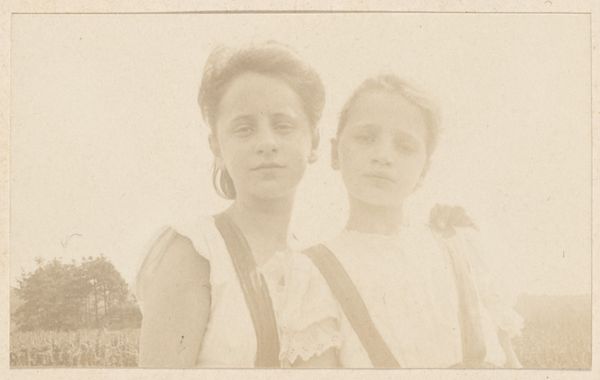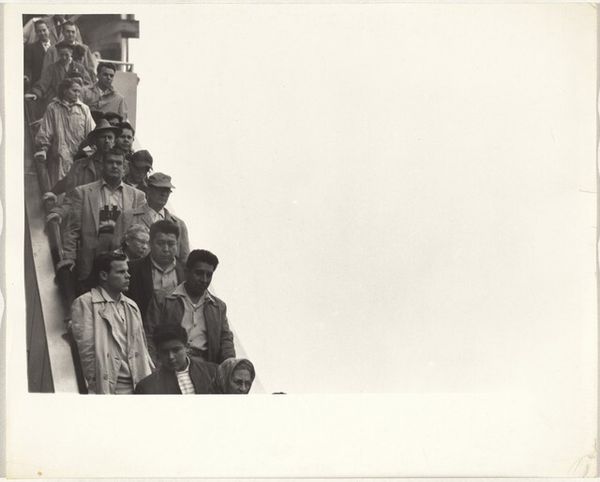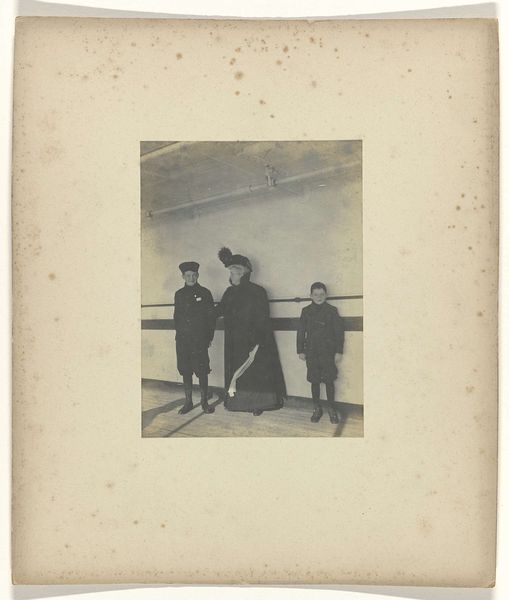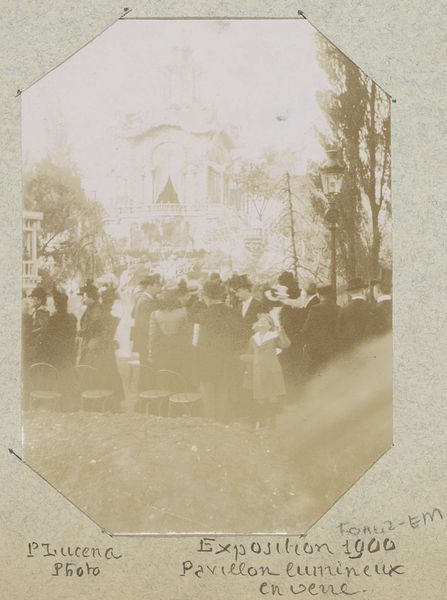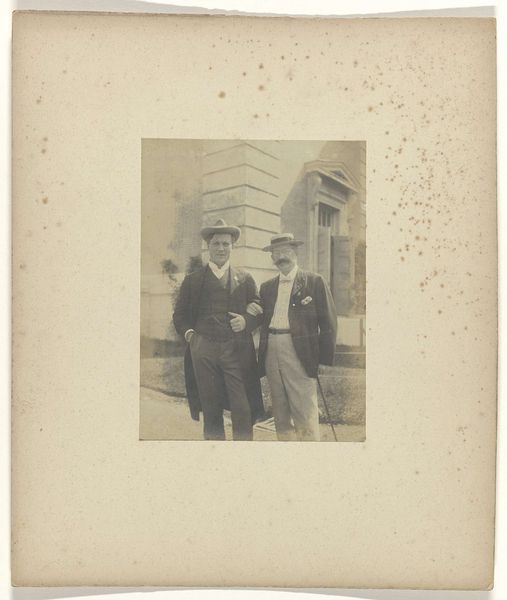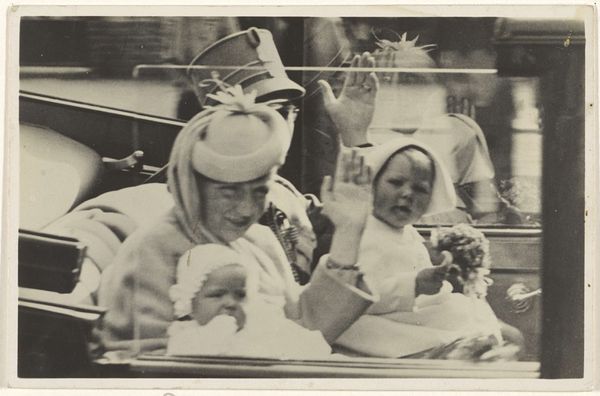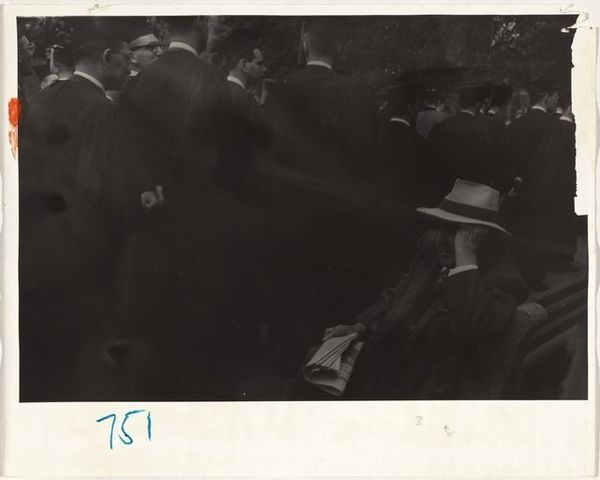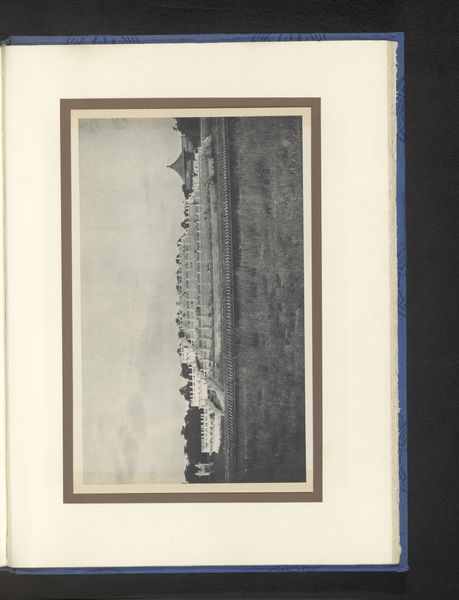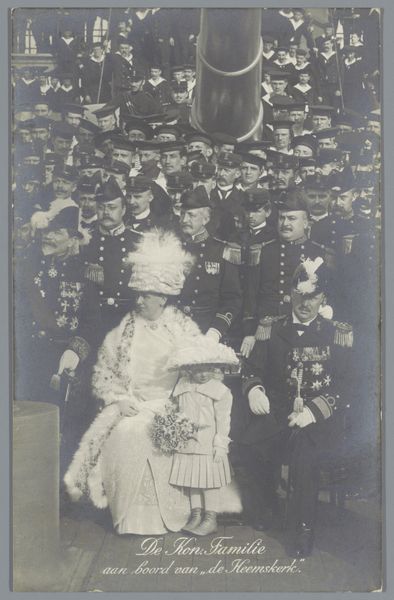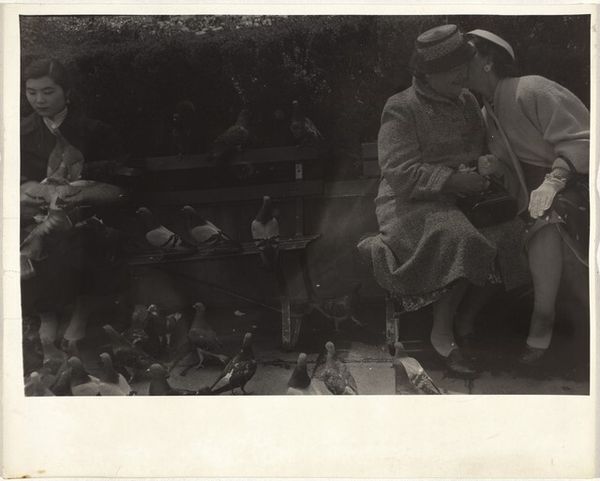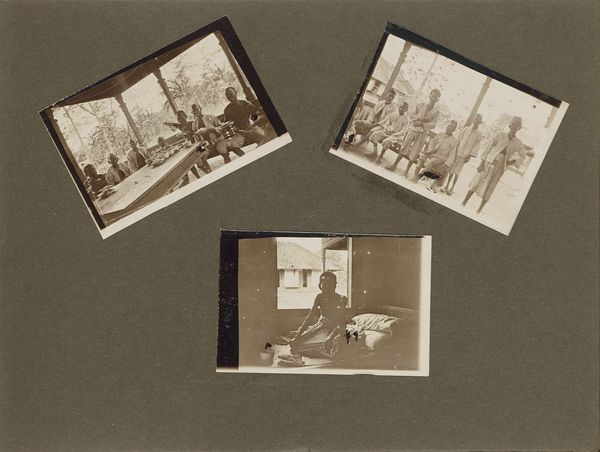
Dimensions: sheet (trimmed to image): 4.5 x 10.7 cm (1 3/4 x 4 3/16 in.)
Copyright: National Gallery of Art: CC0 1.0
Editor: This gelatin silver print is called "Schoolgirls--Children" by Robert Frank, taken sometime between 1941 and 1945. The somber faces and identical hats create a very unsettling mood, almost like a uniform. What historical context informs your interpretation of this piece? Curator: Well, this image strikes me immediately as a portrait of childhood in a time of immense upheaval. Look at the dates - 1941 to 1945. This photo exists within the frame of WWII. Considering the possible location and Robert Frank's biography as a Jewish man living in Europe, we can begin to understand this photograph as more than just “schoolgirls” and consider what this imagery meant at the time. How do socio-political forces shape how you interpret their expressions? Editor: I hadn’t considered the war as directly impacting their expressions, but now that you mention it, their somberness feels less like teenage angst and more like a reflection of the anxieties of the time. Does their uniformity indicate something about social control, or resilience? Curator: Precisely. Uniformity and social control certainly could be considered, especially during this period of fascism. Do you see the sculpture looming behind them? This position and framing are not accidental. Think about what the presence of this piece could indicate. Does this impact your consideration of their future roles in society? Their burdens? Editor: It definitely adds another layer, suggesting the weight of history and societal expectations placed upon them, their expected role within war torn society. This makes the picture more about the unseen future, perhaps. I originally missed the sculpture because I was too focused on the subjects’ faces, but their context adds another layer of narrative. Curator: Absolutely, and Frank's choice to capture this moment in a gelatin silver print, a common medium at the time, democratized the image. Photography was emerging as an art form that captured and reflected reality in new ways for a mass public. We get an intimate glance at childhood and how global turmoil shapes social interactions. Editor: It’s fascinating to consider the different layers of meaning embedded in a seemingly simple portrait, and how context is paramount. Thank you! Curator: My pleasure. I appreciate you noting how artistic expression is affected by our environment, not an individual.
Comments
No comments
Be the first to comment and join the conversation on the ultimate creative platform.

